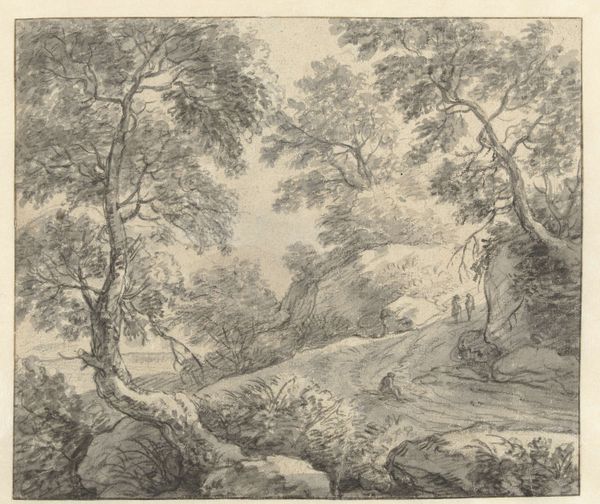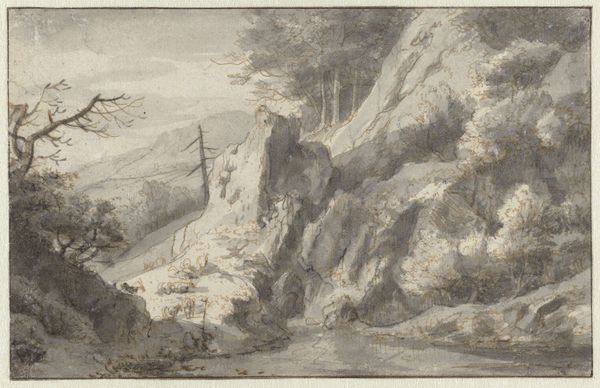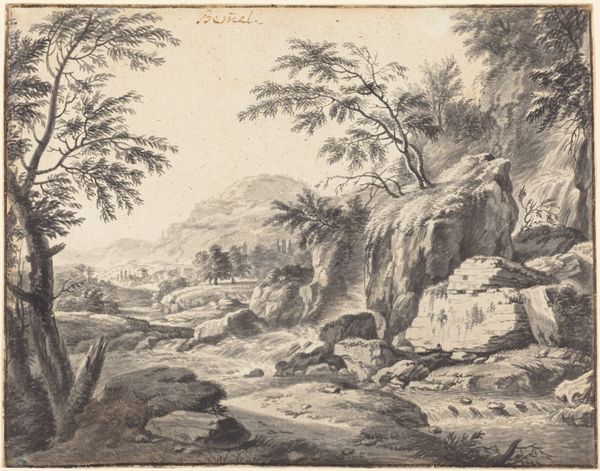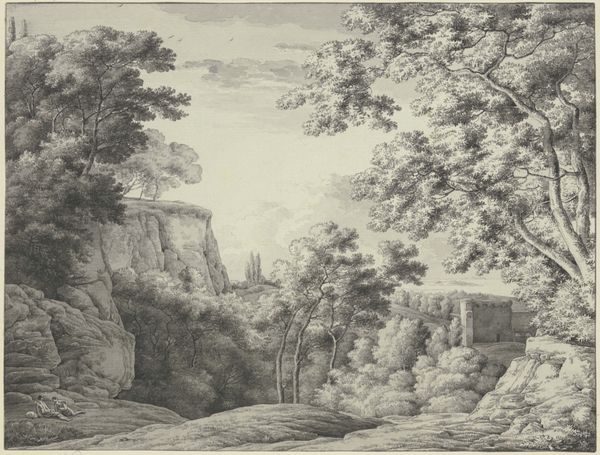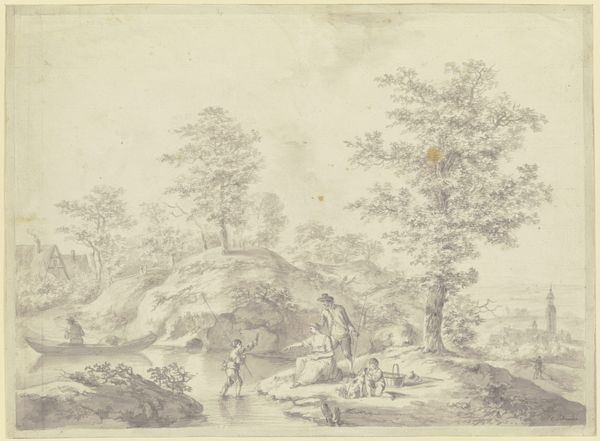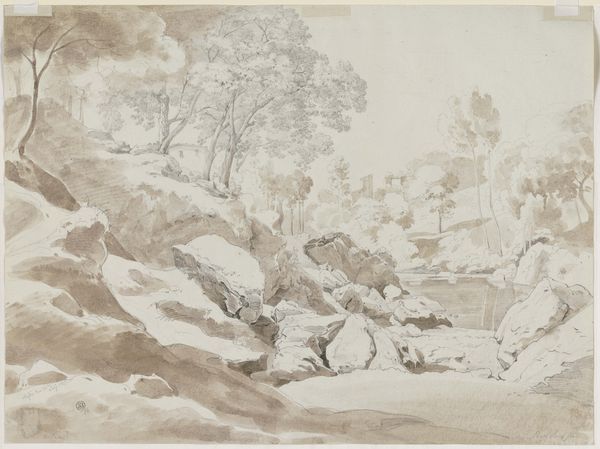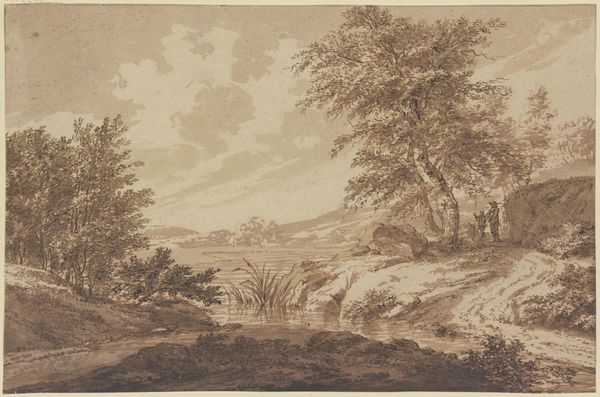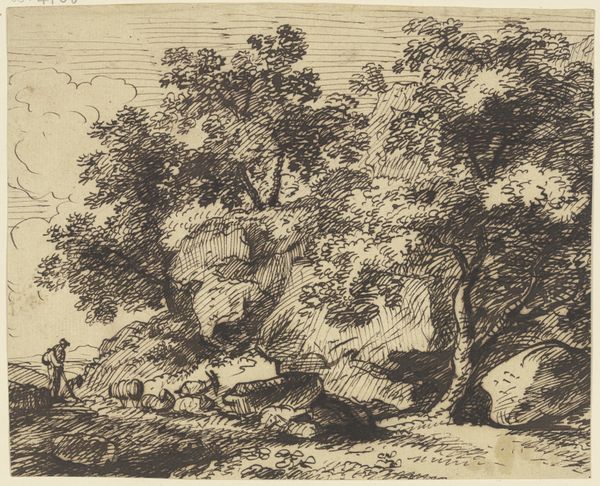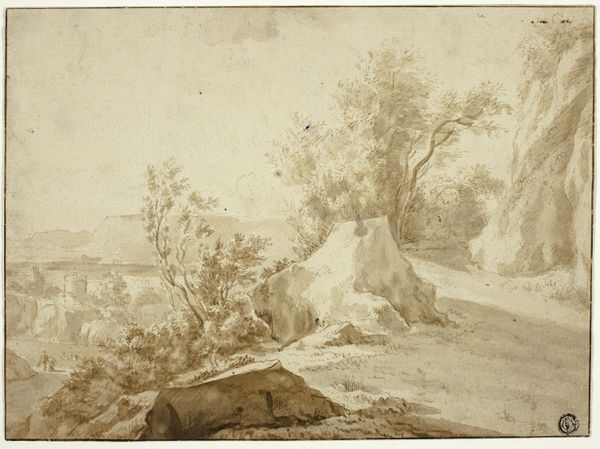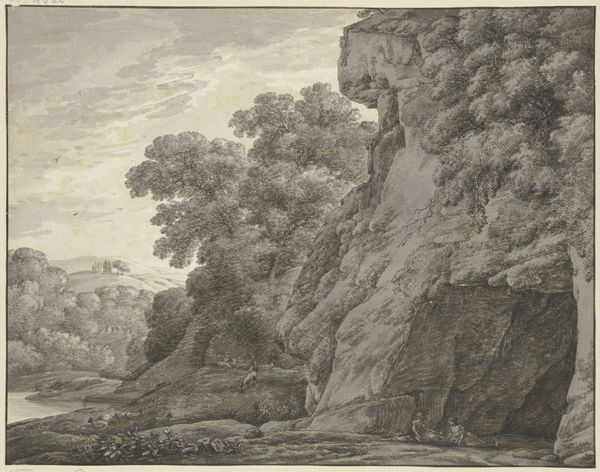
drawing, ink, indian-ink, chalk
#
pencil drawn
#
drawing
#
netherlandish
#
toned paper
#
light pencil work
#
baroque
#
pencil sketch
#
landscape
#
charcoal drawing
#
ink
#
pencil drawing
#
indian-ink
#
pen-ink sketch
#
chalk
#
14_17th-century
#
pencil work
#
pencil art
#
watercolor
Copyright: Public Domain
Curator: This drawing, "Waterfall in the Forest," is attributed to Jan Vermeer van Haarlem the Elder, and likely dates to 1656. It's currently held at the Städel Museum. It appears to be a study using chalk, pen, ink and watercolor on toned paper. Editor: Wow, it's like a hushed symphony in gray! Look at how the light dances across those rocks – they almost feel soft despite their size. I feel this peaceful solitude. Curator: Netherlandish landscape drawings from the Baroque era often depicted the power and sublimity of nature, reflecting broader social and philosophical shifts towards understanding humanity’s place within the natural world. Think about the land reclamation projects of the Dutch Golden Age—these images reassert a wilder, less controllable nature. Editor: That's interesting! It really gets you thinking about control versus surrender. The artist could have just imposed order, but they went for this free flow of nature and I'm immediately thinking about this in my current world and how can I do the same, go against the norm you know. Curator: This piece invites discourse around environmental aesthetics, and perhaps, prefigures later landscape theories relating to Romanticism. This focus can prompt examinations of the human-nature binary. What does it mean that we find pleasure in the sublime wilderness when that same space may exclude or endanger certain bodies? Editor: It's not a pretty picture necessarily, but the fact it's also kind of unrefined and has so many subtle marks, kind of makes it perfect for a reflection. The mind jumps all over. It isn't trying to "prove" anything, just suggest a sense of contemplation to the viewer. The overall feel is meditative. Curator: Yes, it functions almost as a mirror reflecting our own complex relationship to nature, a landscape pregnant with social and ecological meaning. Editor: I like the idea that it shows nature and society's views on that in the 17th century. I now wonder what an equivalent landscape might look like created by an artist today, if society wants even wilder sceneries than that.
Comments
No comments
Be the first to comment and join the conversation on the ultimate creative platform.
